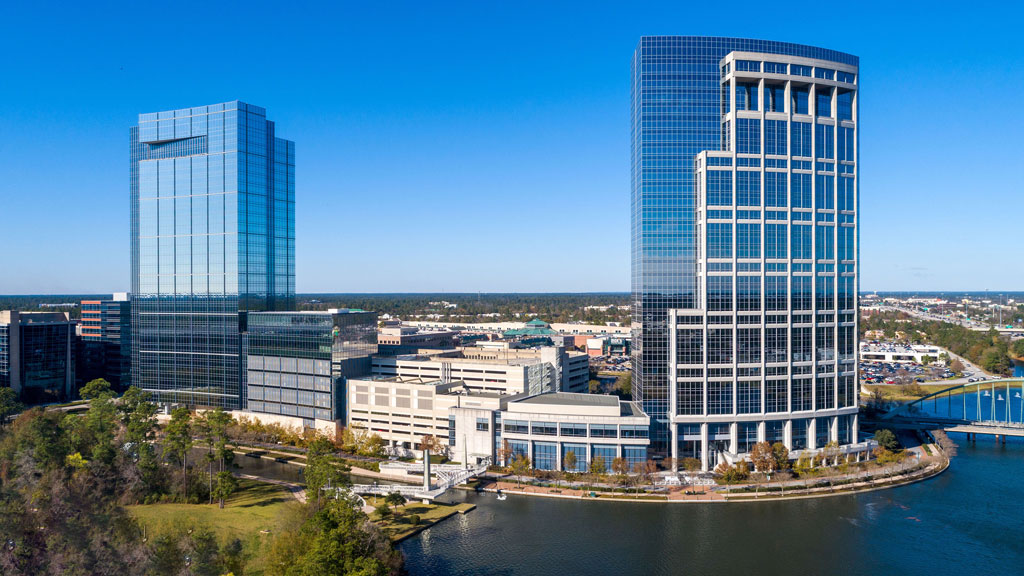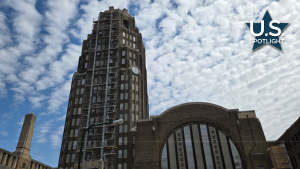For the second year running, The Woodlands, a master-plan community 30 miles north of Houston, Texas, has been named the best community in the United States in which to live. The ranking comes from NICHE, an online resource for information on schools, colleges, cities, neighborhoods and companies across the country.
The Woodlands traces back to the 1970s when Texas oilman and philanthropist George Mitchell purchased 50,000 acres of dense woodland with a vision to create a master-plan community. Today, The Woodlands is home to over 120,000 residents and 2,300 employers, all enjoying a full range of amenities like parks, nature trails, pools and cultural activities.
The community is the Texas centerpiece of the Howard Hughes Corporation (HHC), a publicly traded development company formed in 2010, with a current market cap over $5 billion.
To say the company has long-term patience would be an understatement. Full-scale master-planned communities under the HHC formula involve decades of transformation from single family homes to self-supporting communities.
“It takes five to 10 years and maybe five to 10,000 rooftops before building the commercial aspects,” HHC president Jay Cross told the Daily Commercial News. “Once 10 years in, building the commercial aspects that residents expect can begin. After 20 years and with double the number of residents, there’s a requirement for more offices, retail, hotels and multifamily-for-rent. Thirty or 40 years in, there’s condominium projects for empty nesters, and bigger and better offices.”
Development decisions based on demand translates to a constantly evolving asset mix that adapts to underlying market dynamics. In terms of Texas, that means responding to what has been a steady influx of educated workers and corporate relocations.
Governance is unique. The Woodlands is the only community in Texas governed by a township community, with amenities and services maintained through a public-private partnership with The Woodlands Township. Infrastructure plans are reviewed in partnership with the local counties, Montgomery and Harris, and maintained by Municipal Utility Districts using assessments and bonds to reimburse HHC’s upfront costs.
This stewardship spanning decades is mostly undertaken by HHC internally, making it an integrated, multi-asset class real estate development firm with few peers among public companies.“We typically don’t sell land except to builders who want to build homes,” said Cross. Beyond that, HHC maintains near full control. “We partner where appropriate, but once we have enough expertise in-house, we don’t partner. For example, when we first went into multi-family apartments, we partnered with someone who knew how to build multi-family apartments. Now we do our own multi-family.”
Environmental protection is important. On April 11 of this year, The Woodlands received LEED for Communities Precertification status based on metrics such as resilience planning, transportation and land use, water efficiency, solid waste management, ecosystem and natural resources. Many of the individual multifamily developments have already achieved LEED certifications or are Green Globes Certified. A recently-hired VP of sustainability and the establishment of rigorous ESG corporate policies are further steps taken by HHC.
The company has major developments underway in other states across the country. However, The Woodlands and HHC’s newer communities in Texas, Bridgeland and The Woodland Hills, represent one-third of its residents nationwide and 40 per cent of the company’s total office and commercial space portfolio.
“We think Texas is a great market,” said Cross. “We like Houston in particular because it’s one of the top manufacturing cities in the country, it has more tech workers than Austin in absolute numbers, plus of course, there’s the Texas oil industry and its massive health care industry.”
While neighboring Arizona and Nevada have recently benefited from migration exiting California, Cross noted that Texas has been enjoying inbound migration for some time. Some is corporate relocation attracted by favourable taxation, reduced regulatory friction and a stable workforce.
However, the growth of Texas is a multi-layered success story, Cross said.
“It’s not only companies relocating but also people relocating. There’s a better quality of life here than on the coasts. As a result, Texas is getting an influx from California of course, but also from Illinois, New Jersey, Connecticut, and Pennsylvania. It’s becoming a place for everybody to come.”
And while HHC’s two newer Texas communities are quickly growing, The Woodlands has plenty of development potential, explained Cross.
“As master planned communities mature, they develop in a more intense fashion. We’ve got a lot going on in The Woodlands: cultural centres, more apartments, and condominiums. It all augurs well for the future.”











Recent Comments